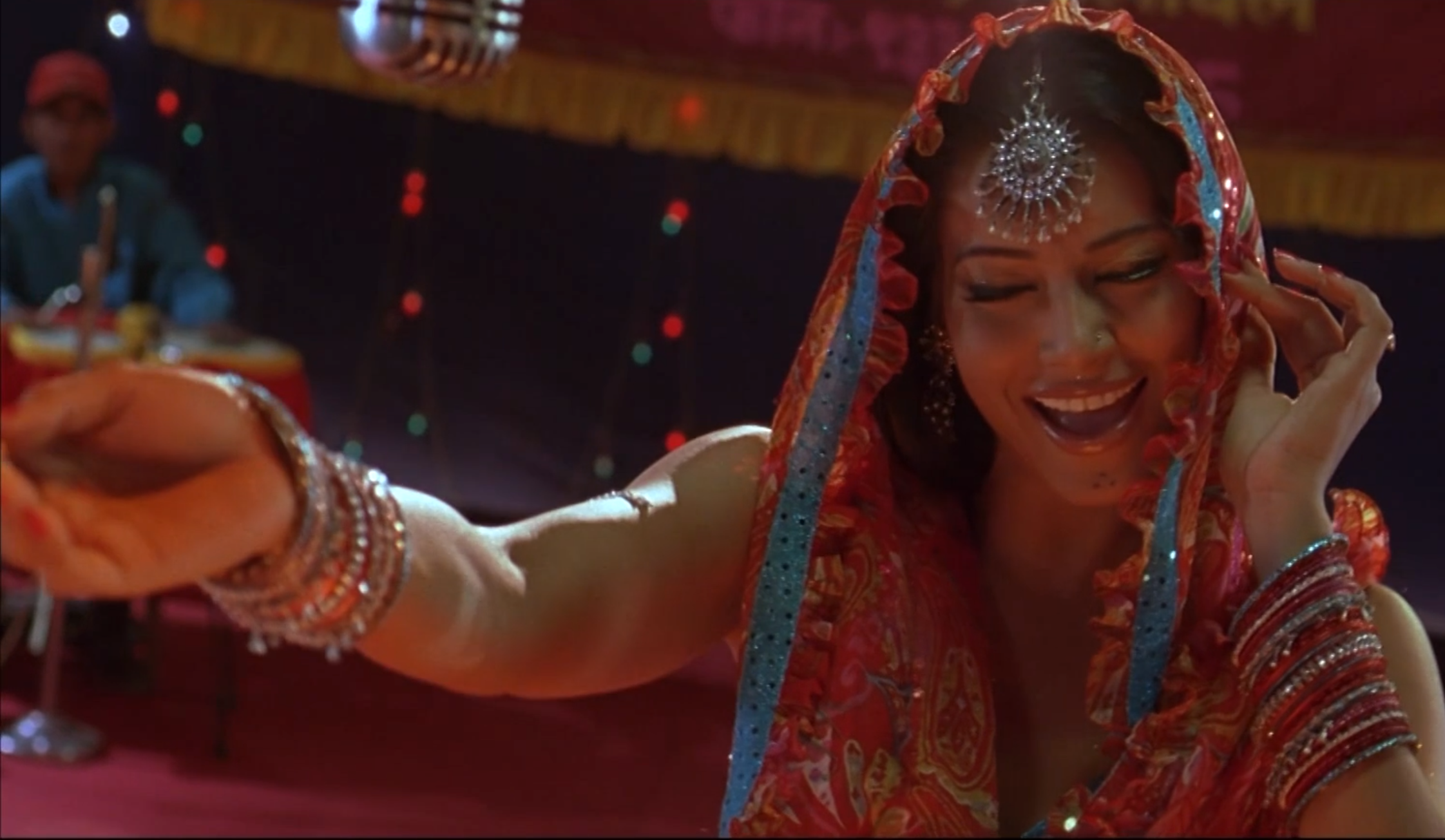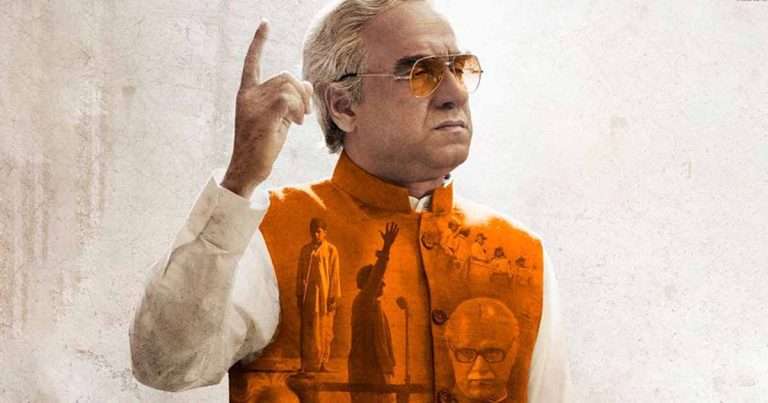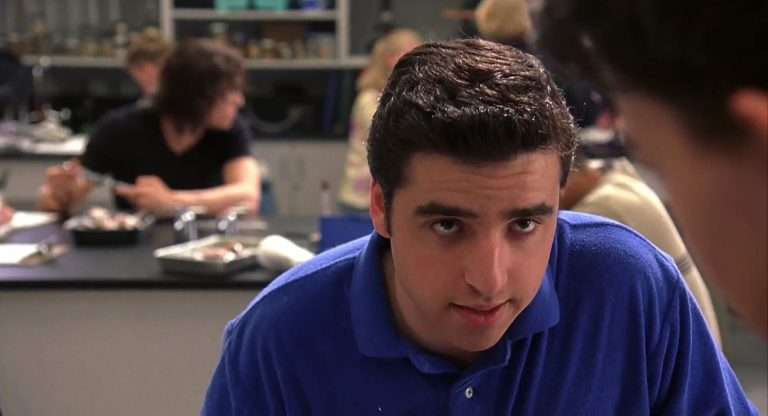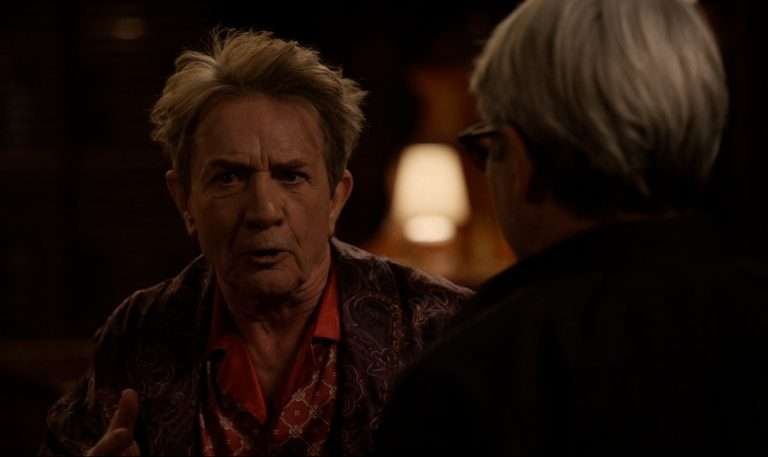Vishal Bhardwaj’s “Omkara” is a film adaptation of William Shakespeare’s tragedy ‘Othello’ which takes second position in a trilogy, following “Maqbool” (Macbeth) and preceding “Haider” (Hamlet), dedicated to proving that the famous playwright’s stories are timeless and universal. By reimagining and transplanting the characters from the upper echelons of sixteenth-century Venetian and Cypriot society to placing a cast in the background of a modern rural Uttar Pradesh, Bhardwaj breathes new life into the story. He creates a masterpiece from a masterpiece, retaining dialogue, symbols, and chronology and intermingling these with additions of his own that deftly capture the multifaceted character relationships of the original.
Langda – Iago’s Deception
Iago, aka Langda, is the villain who creates a web of lies out of his jealousy that Cassio/Kesu was promoted to be the protagonist’s Othello/Omkara’s right-hand man. One of his deceptions results in Kesu losing the position and Omkara giving it to Langda instead. This is much the same as the original play, and just like it, it is vital to notice that even after Langda receives what he desires, the elevated position, his deception continues. He falsely makes it seem to the tragic hero that his lover, Dolly, is cheating on him with Kesu while pretending to be a friend to all.
When Omkara is confronting Kesu about drunkenly starting a street fight that caused him to lose his promotion, Langda defends Kesu, saying, “sara kasoor…mera (hai)” (it is all my fault), taking responsibility as the person who encouraged him to drink. In this mastery of deception, Langda feigns honesty by being truthful and just as effortlessly as “honest Iago” does before speaking a lie. He knows how to identify the weaknesses of those around him and use those weaknesses to control the emotions of others to get what he wants.
He knows Omkara feels inferior to Dolly because of her beauty, youth, and upper caste status, which is why he emphasizes that Dolly and Kesu “college mei pade hain” (have studied together in college). Langda is inadvertently showing Omkara that Dolly and Kesu have more in common than he does with her. In this way, he is setting up characters to interact with each other in a certain way so that Omkara misinterprets reality. He is creating scenes within scenes where Langda’s most obvious illusion occurs when he speaks with Kesu about Kesu’s girlfriend, Billo (Bianca), making it seem to Omkara that he is referring to Dolly. This is taken almost directly from Shakespeare’s play and underpins the text’s constant imagery of dreams, trances, and superstition, all of which allude to the presence of an unreliable reality that extends onto Iago presenting himself as an “honest friend.”
After all, he admits that he disguises the “blackest sins” with “heavenly shows.” The fact that both Shakespeare’s and Bhardwaj’s villains go to this extent to knowingly cause pain and suffering proves that they are both Machiavellian in nature. They lie and manipulate just for the pleasure of it with no apparent gain. Though most reviews describe Langda as a more sympathetic version of Shakespeare’s villain, this is an ill-informed interpretation. Vishal Bhardwaj stays true to Iago’s wickedness, setting it in an Indian context by bringing south-Asian idioms to life.
Notice that Langda’s character is the only one where the first sound of his name is not phonetically the same as that of Shakespeare’s cast. This is because Bhardwaj’s version of the villain has a limp which is what Langda’s name means; it is an aptronym, a name that is descriptive of the person, and in this case, Langda is being described as someone who is not straightforward (seedha aadmi nahi hai). Bhardwaj also shows him using Raju’s shoulder as a gun rest to shoot others (kisi aur ke kandhe par rakh kar bandook chalana), symbolizing how the antagonist does not directly get blood on his hands but uses others to carry out his dirty schemes.
Omkara – Othello’s Social Status
Bhardwaj pays so much attention and runtime to the antagonist that many of the traits that made the protagonist of Shakespeare’s play so compelling fall short in his adaptation. In the original, Othello is a general in the Venetian army. Though he is respected for his contributions as a mighty soldier and leader, he is still treated as an outsider due to his African ethnicity. This is why characters often refer to him as the “valiant Moor,” which is almost an oxymoron because valiant, a compliment, contrasts with the word Moor, a derogatory name describing his dark complexion.
Not only is Othello judged, but he is also dehumanized, being called a “beast,” “devil,” and “barbary horse.” Othello is affected by this racism. He does not forget to continuously express that he is “little blessed” and “rude in…speech” despite being the most eloquently spoken character in the entire play. His stories of battle are so appealing the duke expresses that they would “win (his) daughter, too.” In other words, anyone can be impressed by him.
Othello almost always speaks in the poetic, rhythmic scheme of iambic pentameter, a favorite of Shakespeare’s. It is only when Othello succumbs to what he is judged as being and when his faith that Desdemona “loved (him) for the dangers (he) had passed” and did not care for his skin color is lost that his speech truly becomes “rude,” and he truly commits devilish acts. In Bhardwaj’s adaptation, to make it a more authentic Indian movie, the issue is instead about the caste system where those of the oppressed caste are similarly discriminated against.
Omkara is visibly darker in complexion than other characters, symbolized by a black shawl wrapping around him. However, this issue of casteism is only mentioned at the beginning of the movie when Omkara tells Dolly he is “aadha jaat” (half-caste) and tethers away as the theme of Langda’s deception takes center stage. In this way, Shakespeare’s progressive message that discrimination and prejudice can contribute to making the noblest of people bad is lost.
Moreover, Omkara and the other characters in the movie speak in a rough Hindi dialect, and the audience never gets to hear his adventurous tales like they do in ‘Othello.’ Therefore, when it comes to the theme of race, ‘Omkara’ is not as well-versed as ‘Othello.’ Other character traits are similarly vague in the adaptation. Shakespeare emphasizes how Othello is so trusting. He “is of a free and open nature” because he believes everyone will be as honest as him, and Iago knows this weakness which is why he says Othello will “be led by th’ nose as asses are”, he can easily be made a fool. This is not apparent in “Omkara”; in fact, the opposite is depicted when he threatens Langda to admit his honesty.
Moreover, in “Omkara,” the anti-hero kills Dolly from the rage of betrayal. Still, in the play, it is also a way for Othello to enact his own justice for being made a “cuckold” for the honor of his manhood being compromised because of his wife’s suspected affair. Another lackluster aspect of the character in the film is that he only mentions it once when he gives Dolly the kamarband (waistband), stating it to be a legacy of honor that the women of the house are expected to uphold.
Othello’s fall from his noble nature to rage, hate, and jealousy is so significantly recognized that there is an entire medical condition named after him, Othello Syndrome, describing paranoia-tinged delusional envy and though it is still heart-wrenching to watch Omkara’s reality and he himself becomes corrupted, the depth of Shakespeare’s tragic hero is not present in Bhardwaj’s adaptation. Instead, Omkara is just a pawn in Landa’s story.
Dolly & Indu – Desdemona and Emilia’s Resistance
It is evident that both Shakespeare and Bhardwaj are sympathetic to the plights of women from the beginning of their respective stories, considering that both Desdemona and Dolly take charge of their own lives by marrying the man of their choice. In the play, Iago warns Barbantio, Desdemona’s father, that there are “thieves” in his house and that he should look for his “bags.” Iago is essentially describing Desdemona as something her father owns, and by marrying Othello without his permission, Barbantio has been “robbed.” He is astounded that his daughter could have the agency to make such a decision, which is why he believes that she was “corrupted by spells” over the notion of her own autonomy. Similarly, in “Omkara,” Dolly expresses that the choice was made solely by her.
Another character that stands up for herself is the courtesan Bianca/Billo, who is given the handkerchief/kamarband by Cassio/Kesu. She, too, questions him about infidelity, though this is also falsely set up by Iago. It is progressive to see a woman of marginalized social status, a sex worker, demand respect and loyalty. Shakespeare also challenges the notion that women do not get along with each other by having Emilia, Iago’s wife, stand up for Desdemona by revealing her husband’s lies and proclaiming that Desdemona is “honest” and “chaste.” Bhardwaj takes this a step further by making Indu (Emilia) kill her husband, Langda, thus obtaining justice for Dolly’s death in a manner even more satisfying than the original. She stabs him in the throat, ensuring that he can never speak another word of lie again.
Comparing Themes & Symbols in ‘Omkara’ to Shakespeare’s ‘Othello’
Perhaps one of the reasons why Shakespeare’s scripts translate so well into societies and cultures hundreds of years later is because he was so ahead of his time in his portrayal and criticism of jealousy, womanhood, reputation, prejudice, and deception – all of which are central themes in both ‘Othello’ and Vishal Bhardwaj’s Film adaptation, “Omkara.”
Kamarband — The Handkerchief as a Symbol of Love
Love is another crucial theme, known to be symbolized by the handkerchief because Othello describes it as something that can “subdue” people to love. Eventually, its origins from an Egyptian sorcerer hold true as it twists Othello’s reality, playing a role in Othello’s suspicions of infidelity, leading him to call his “gift” a “napkin” and something that is “too little.” In other words, Desdemona’s love is fake and not enough. At this point, as Othello’s love and trust fall, Desdemona drops the handkerchief, too. Likewise, Omkara gifts Dolly a kamarband (waistband) and tells her to treasure it.
This token, too, slips off her waist, and as it falls to the ground, the camera also moves downwards, physically illustrating the fall of Omkara’s love. It is taken by Emilia/Indu on their husbands’ instructions, and Iago/Langda plant it in Cassio/Kesu’s hands as proof to the protagonist that his lover’s love lies somewhere else. The anti-heroes’ rage at this is palpable. A division between him and his partner is symbolized by a pillar between Dolly and Omkara when they are performing their marriage nuptials and expressed via the lullaby ‘Willow’ in the original play.
The Green-Eyed Monster
Jealousy is a key theme and force that drives the play’s plot, which Iago warns Othello is a “green-eyed monster.” Bhardwaj brings this symbol to life by imbuing the color green in the setting and characters. Notice that Langda, whose deceptions arise from his jealousy of not being promoted and also give rise to Omkara’s jealousy, is almost always wearing green clothes. As the movie’s climax approaches, Omkara confronts Dolly and tells her she has placed the kamarband, her love, somewhere else. All subsequent scenes featuring the protagonist are tinged with an unmistakable green hue up until he murders his wife, at which point the environs become red like Omkara’s rage.
Hence, by using this chromatic imagery Bhardwaj is essentially saying that Langda is the monster whose lies influence and corrupt the hero to such an extent his environment literally suffocates with the augmented jealousy, and to end it, he suffocates Dolly. When he realizes the truth of his anger, he kills himself, falling beneath the swing that Dolly’s body lies on, another symbol depicting the moral high ground she has over Omkara and, like a swing, the oscillating faith, love, and trust he had in her.
The Music of Omkara

It is impossible to speak about a Bollywood movie without mentioning its songs and dance. Especially when the director of a film is both the music composer, with contributions from singers such as Rahet Fateh Ali Khan and writers such as Gulzaar, audiences can anticipate a movie with an impressive track.
Omkara
The name “Omkara” arises from the Lord Shiva, the God of destruction in Hinduism, responsible for ending the universe when his rage awakens his third eye. It is true that Omkara eventually behaves like Lord Shiva. When he believes in clearly perceiving Dolly’s disloyalty, almost like having a third eye, in his anger, he kills her and eventually himself, and by doing so, he destroys his world. This is why the song ‘Omkara’ describes him as the God; he has three lines on his forehead (“maathe…teen bal padte hain”) and falls like lightning (“bijuri sa pondhe”).
The song Omkara also introduces the character’s bravery, power, and respect, similar to how it is described that Desdemona fell in love with Othello. Omkara “sabse bada ladaiya (hai),” he is the greatest fighter, just as Othello speaks of his own “hairbreadth’ scapes” and all the “dushman” (enemies) are scared of him just as Othello encounters “insolent foe.” Hence, though the poetry of Shakespeare’s play is lost through the rough dialect of the characters, the lyrics certainly imbue another sense of poetry in “Omkara.”
O Saathi Re
At the climax of Shakespeare’s play, Desdemona knows she is about to be murdered; she begs Othello to “let (her) live” out the rest of the day and to instead “kill (her) tomorrow.” These are the origins of the soulful song ‘O Saathi Re’ sung by Shreya Ghoshal and Bhardwaj himself. In the song, the speaker is begging that “din doobe na” (the day never ends) so that “chaanv,” shadows and darknesses which represent lies and deceit, never touch them (“chhue na”). The speaker is warning her lover that when the sun becomes tired (“thaka sooraj”), in other words, when there is a strain between them, it can risk slipping on rocks covered in moss and sinking into the horizon. Moss, which is green, symbolizes jealousy.
Hence, they need to be careful to avoid succumbing to it and to do that, they must work together. This is why she tells him, “pheet pe lene” (hold the sun on your back), and she will give support from behind. Perhaps if Omkara and Dolly, the same as Othello and Desdemona, were able to work through the lies together, the darkness and tragic outcomes of those lies would never have happened, and just like the speaker in the song wishes the day to continue, so would have their lives and their love.
Beedi
Item songs are often criticized as being redundant and only added to garner attention by provocating a section of the male audience. However, the song ‘Beedi’ (cigarette) serves to describe Langda’s jealousy and anger at Kesu being promoted to be Omkara’s right-hand man instead of him, which is why he specifically sings the lyrics “thandi hawa bhi khilaf” (even the cold air is against me), as he believes that Othello is against him. In the chorus, the lyrics “jigar mein badi aage hai” is heard, which describes both the courtesan Billo as being an attractive woman, but the constant imagery of fire and heat also expresses langda’s fuming anger.
He believes he has been punished despite not having “kasoor” and “fatoor.” In other words, despite not doing any “jurm,” anything wrong, this punishment is worse and unlike that of the pain of a “chakkuon” (knife). It was Omkara’s words that made Kesu the “Bahubali” that bit against Landgda’s skin so harshly that “nisaan chhod de” (it left marks). Hence, when analyzed more closely, this fun item song becomes Langda’s explanation for his horrible actions and reflects the beginning of Shakespeare’s ‘Othello’ where Iago’s anger at Cassio being a “bookish theoric” and not a soldier is palpable.
Naina
Just as the original play is written in dramatic irony, where the audience knows more about the plot than the characters themselves, so is Bhardwaj’s adaptation, and the song ‘Naina’ only adds to this dramatic irony. Probably the most obvious in meaning, the lyrics serve as a warning, reflecting the emotions of the audience where they know Omkara must not trust the reality he is being shown (“naino ki maat maaniyon re) because they can “thug” (deceive) him. The lyrics also often mention eyes casting spells (“jaadu phukenge”) which is reflective of the constant magical imagery in ‘Othello’ that underpins the idea of an unreliable reality.
Poison or “zehar” is another repeated lyric that is also continuously mentioned in the play. After all, Iago himself expresses that his actions are like a “poison” that corrupts Othello’s “delight.” When Rahet Fateh Ali Khan sings that the eyes can take you to heaven (“swarga mein le jaavein”) and give you rain, the meaning is the same as Iago’s quote that he has “heavenly shows,” which are actually the “blackest sins.” Essentially, every word of this song is warning Omkara that he cannot rely on what he sees and is being told, and as an audience that is aware of the truth, it is agonizing to watch the warning of this non-diegetic song not reach him.
Final Thoughts
Vishal Bhardwaj is such an excellent storyteller that the complexities and intricacies of the themes of deception, love, jealousy, etc., can be understood without the context of William Shakespeare’s play. Not only is the movie meaningful, but it is also entertaining to watch, certainly containing many elements of a Bollywood film, such as forbidden love and action. However, when the two are compared, the genius of both writers – Shakespeare’s ability to write timeless stories hundreds of years before and Bhardwaj’s ability to translate and incorporate them into Indian society and culture – is truly revealed. “Omkara” is an exquisite adaptation of ‘Othello’ and is undoubtedly worth a watch.






![Kadaisi Vivasayi [2022]: ‘SonyLIV’ Review – A Fascinating Ode to Farmers and Simple Living](https://79468c92.delivery.rocketcdn.me/wp-content/uploads/2022/03/kadaisi-vivasayi-642969-768x432.jpg)
